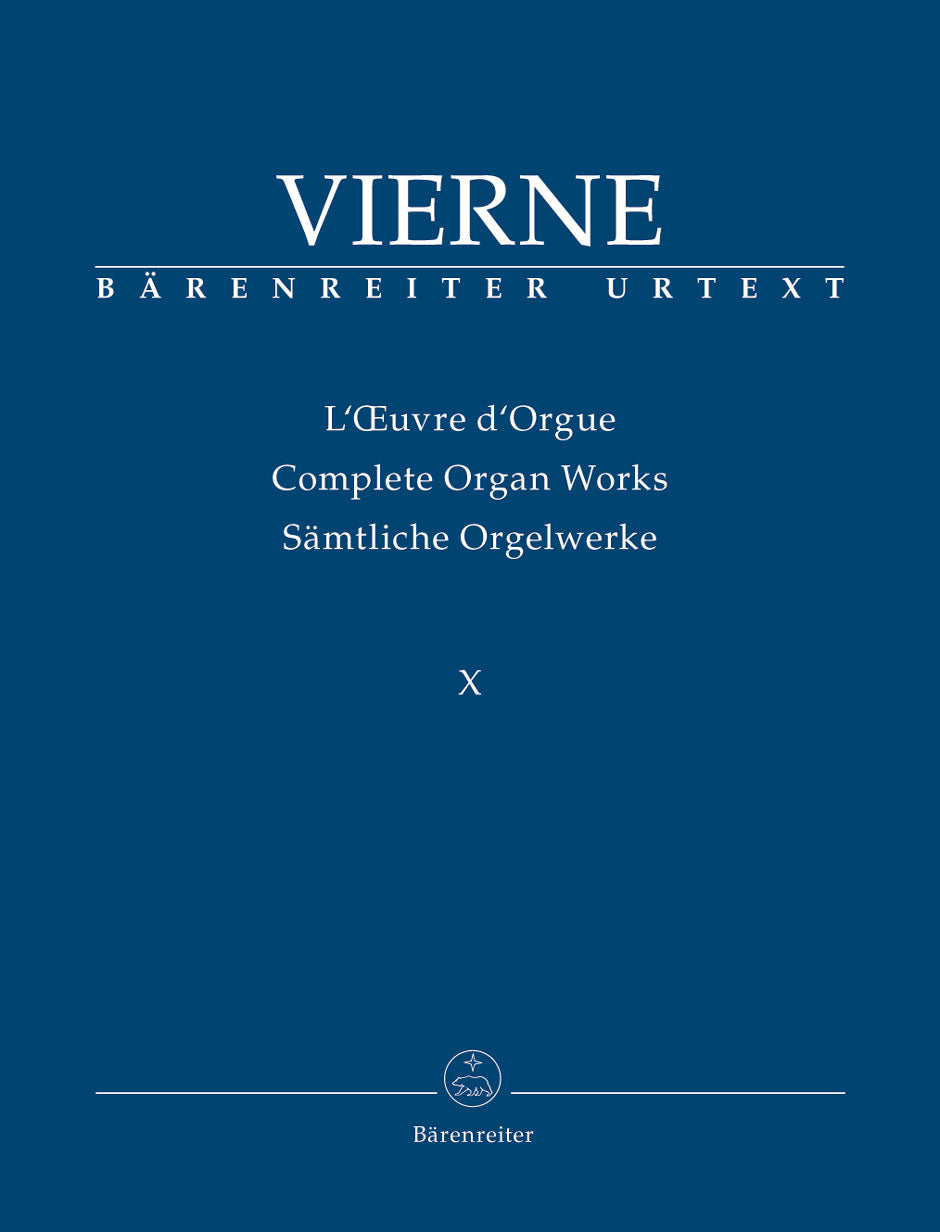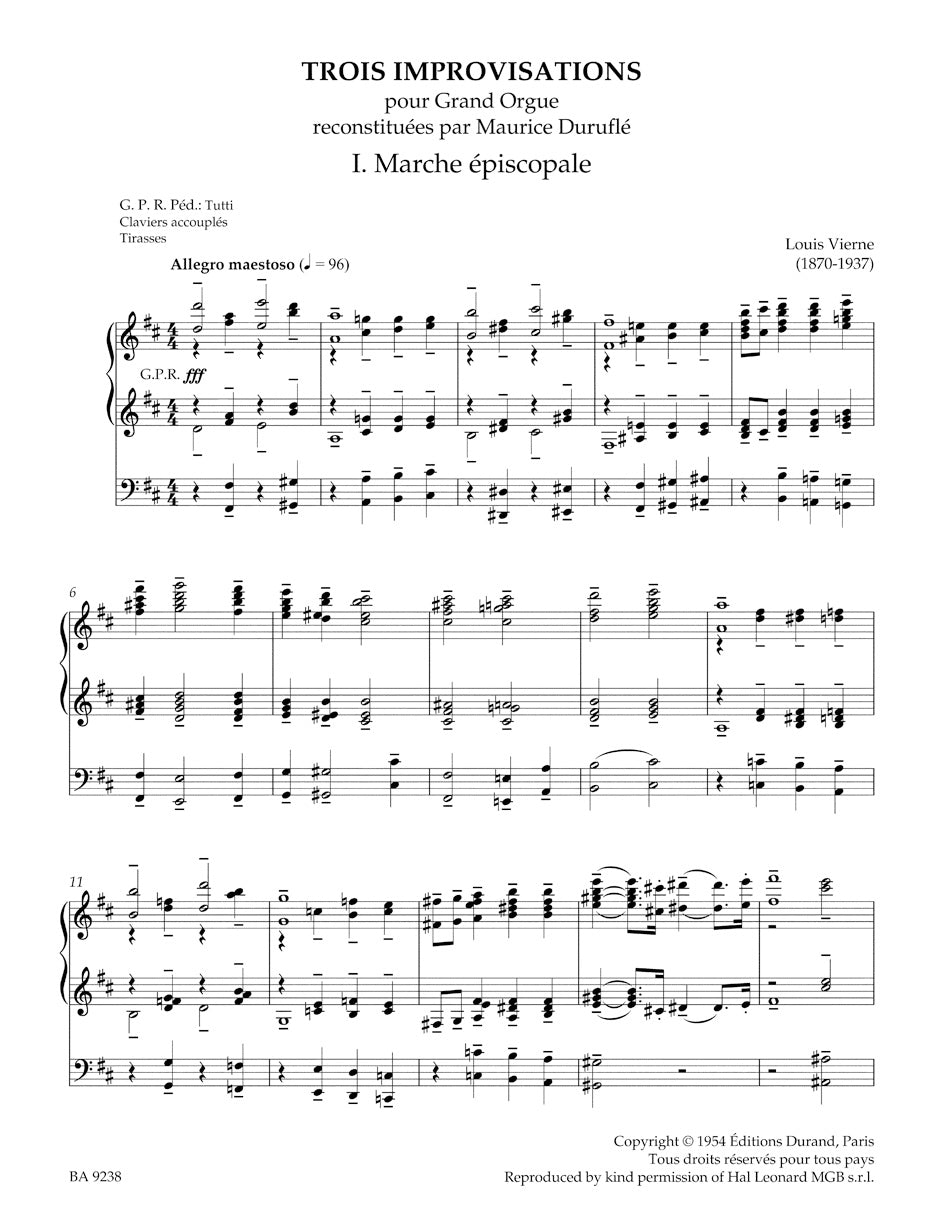Vierne: Improvisations (1928) / Transcriptions (1894, 1901, 1932)
Complete Organ Works - Volume 10
In stock and typically ships within 1 business day.
- Composers: César Franck (1822-1890), Sergei Rachmaninoff (1873-1943), Johann Sebastian Bach (1685-1750), Louis Vierne (1870-1937)
- Editor: Helga Schauerte-Maubouet
- Instrumentation: Organ, Piano
- ISMN:
- Size: 9.1 x 11.8 inches
- Pages: 56
- Urtext / Critical Edition
Description
Louis Vierne (1870–1937) brought symphonic French organ music to its stylistic climax.
Besides being a productive composer, he also gained a reputation as a brilliant improviser at his place of employment, the Notre Dame Cathedral in Paris, and throughout the world.
In 1928 Vierne, one of the best-known organists of his day, made one of the earliest organ recordings, playing Bach works and his own improvisations in Notre Dame.
Three improvisations released in 1929–30 were transferred to musical notation in 1954 by his pupil Maurice Duruflé. Another previously unpublished improvisation which was recently rediscovered among Vierne's posthumous papers was reconstructed and published in musical notation in 2005 by Duruflé's pupil Jean-Michel Louchart (b. 1946). These four improvisations join Vierne's transcriptions of works by Johann Sebastian Bach, César Franck and Serge Rachmaninoff in this volume, bringing this complete edition of his organ works to a close.
Works:
- Vierne: Marche épiscopale (reconstructed by Maurice Duruflé) (1954)
- Vierne: Méditation (reconstructed by Maurice Duruflé) (1954)
- Vierne: Cortège (reconstructed by Maurice Duruflé) (1954)
- Vierne: Improvisation (reconstructed by Jean-Michel Louchart) (2005)
- Bach: Sicilienne (transc. for organ), BWV 1031
- Franck: [Cinq] Pièces (transc. for organ) (1901)
- Rachmaninoff: Prélude in C-sharp Minor, Op. 3, No. 2
Publishers use a lot of words to describe what they sell, and we know it can be confusing. We've tried to be as clear as possible to make sure you get exactly what you are looking for. Below are descriptions of the terms that we use to describe the various formats that music often comes in.
Choral Score
A score for vocalists that only contains the vocal lines. The instrumental parts are not there for reference. Generally, cheaper than a vocal score and requires multiple copies for purchase.
Facsimile
Reproductions of the original hand-written scores from the composer.
Full Score
For ensemble music, this indicates that the edition contains all parts on a single system (there are not separate parts for each player). In larger ensembles, this is for the conductor.
Hardcover
Hardbound. Generally either linen-covered or half-leather.
Orchestral Parts
Similar to a wind set, this is a collection of parts. In the case of strings, the numbers listed are the number of copies included, though generally these are available individually (often with minimum quantities required).
Paperback
When publishers offer multiple bindings (e.g. hardcover) or study scores, this is the "standard" version. If you're planning to play the music, this is probably what you want.
Performance / Playing Score
A score of the music containing all parts on one system, intended for players to share. There are not separate parts for each player.
Set of Parts
For ensemble music, this indicates that there are separate individual parts for each player.
Solo Part with Piano Reduction
For solo pieces with orchestra, this is a version that contains a piano reduction of the orchestra parts. For piano pieces, two copies are typically needed for performance.
Study Score
A small (think choral size) copy of the complete score meant for studying, and not playing. They make great add-ons when learning concertos and small chamber works.
Vocal Score
A score prepared for vocalists that includes the piano/organ part or a reduction of the instrumental parts.
Wind Set
For orchestral music, this is a collection of wind and percussion parts. The specific quantities of each instrument are notated.
With Audio
In addition to the printed music, the edition contains recordings of the pieces. This may be an included CD, or access to files on the internet.
With / Without Fingering (Markings)
Some publishers prepare two copies - a pure Urtext edition that includes no fingering (or bowing) suggestions and a lightly edited version that includes a minimal number of editorial markings.





